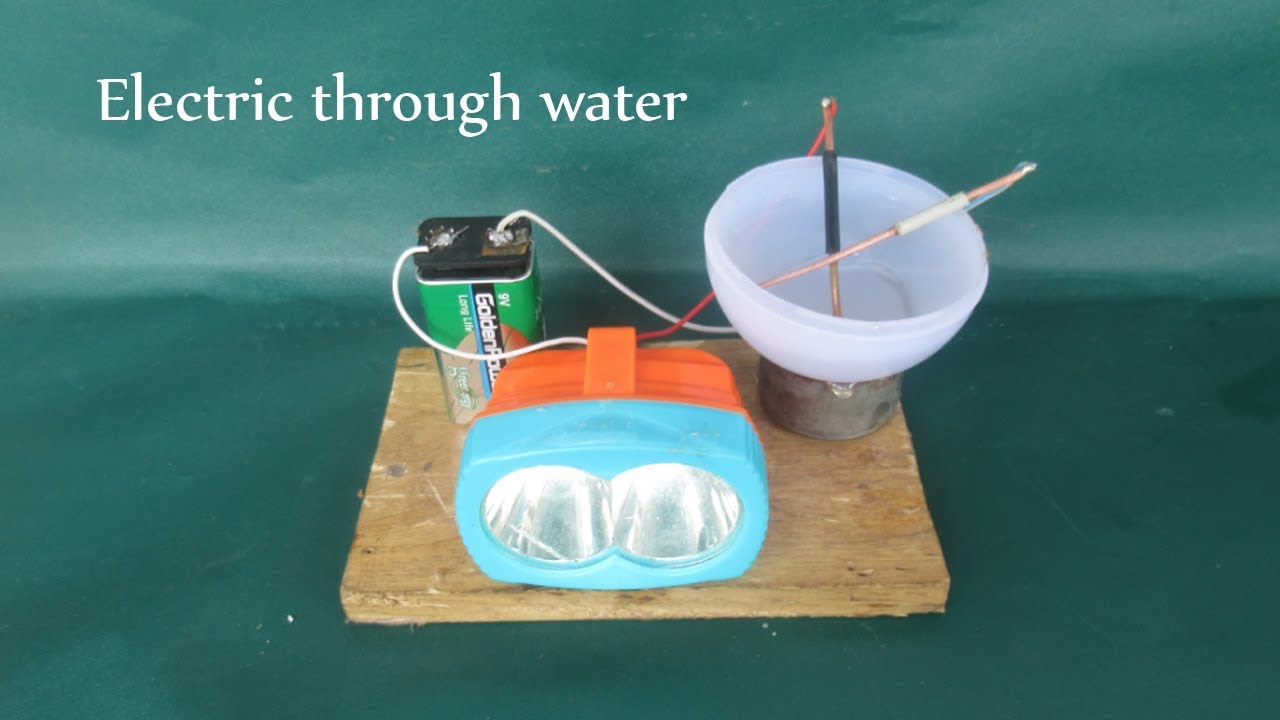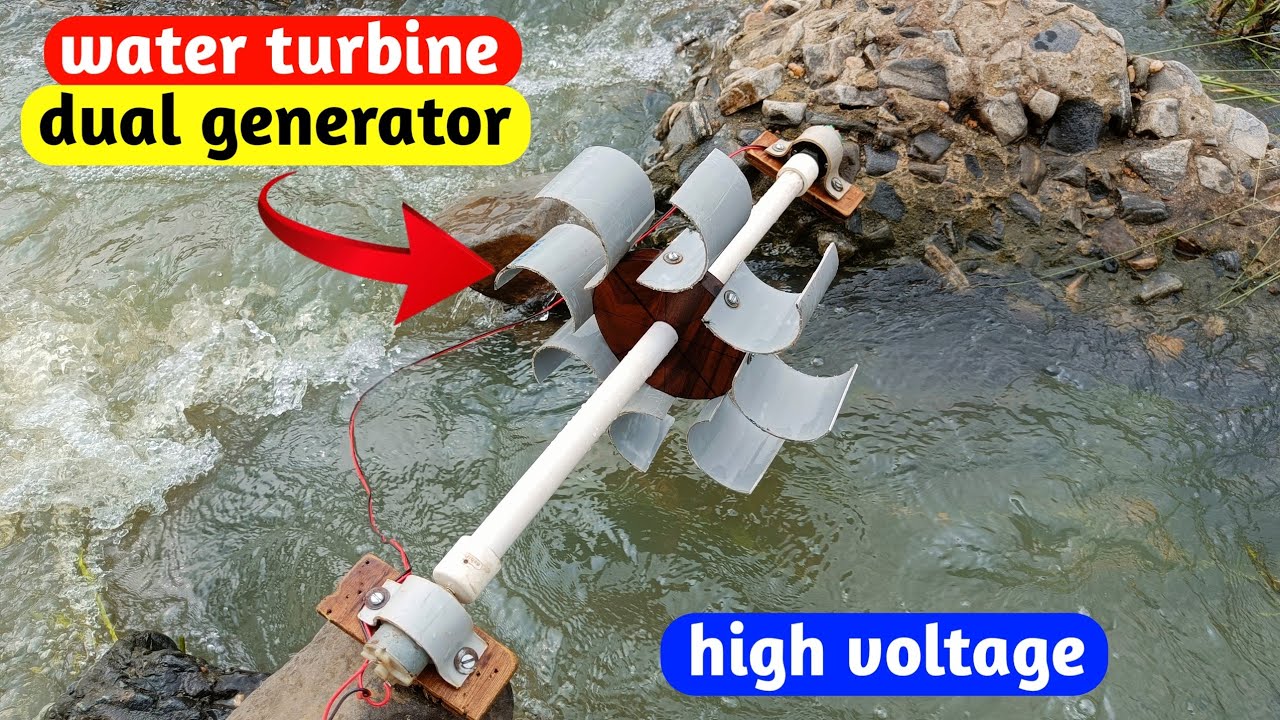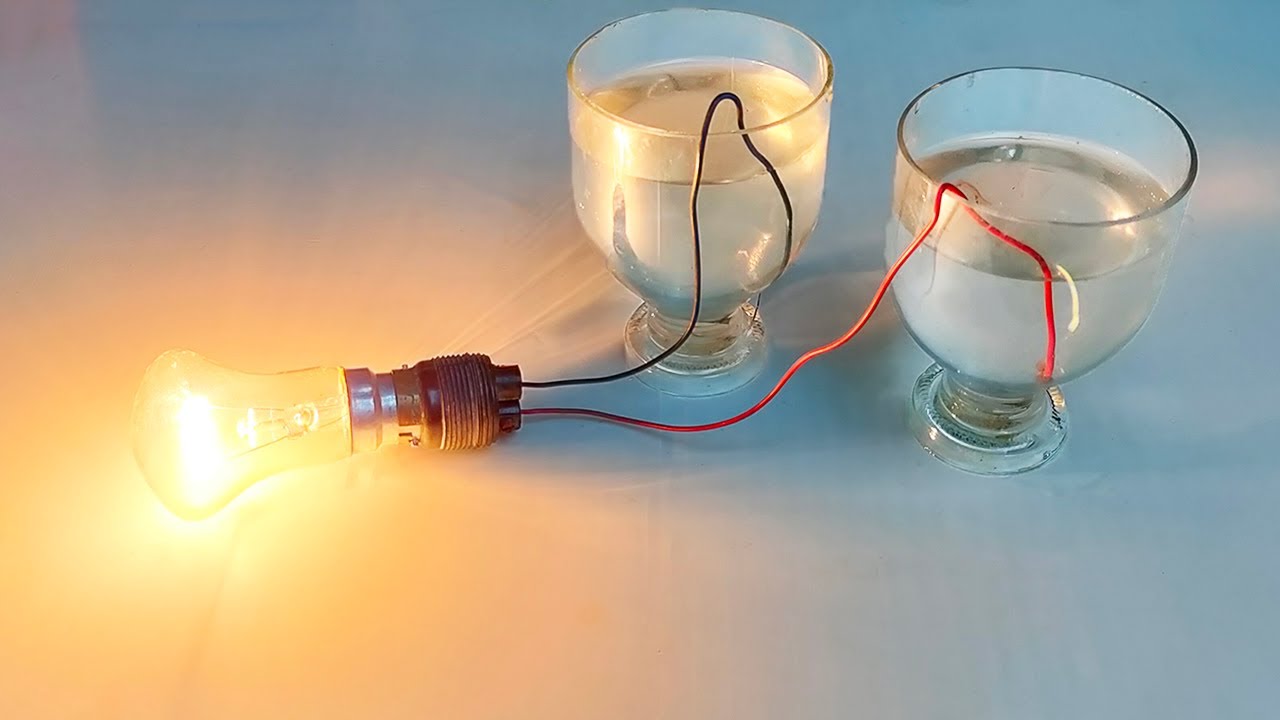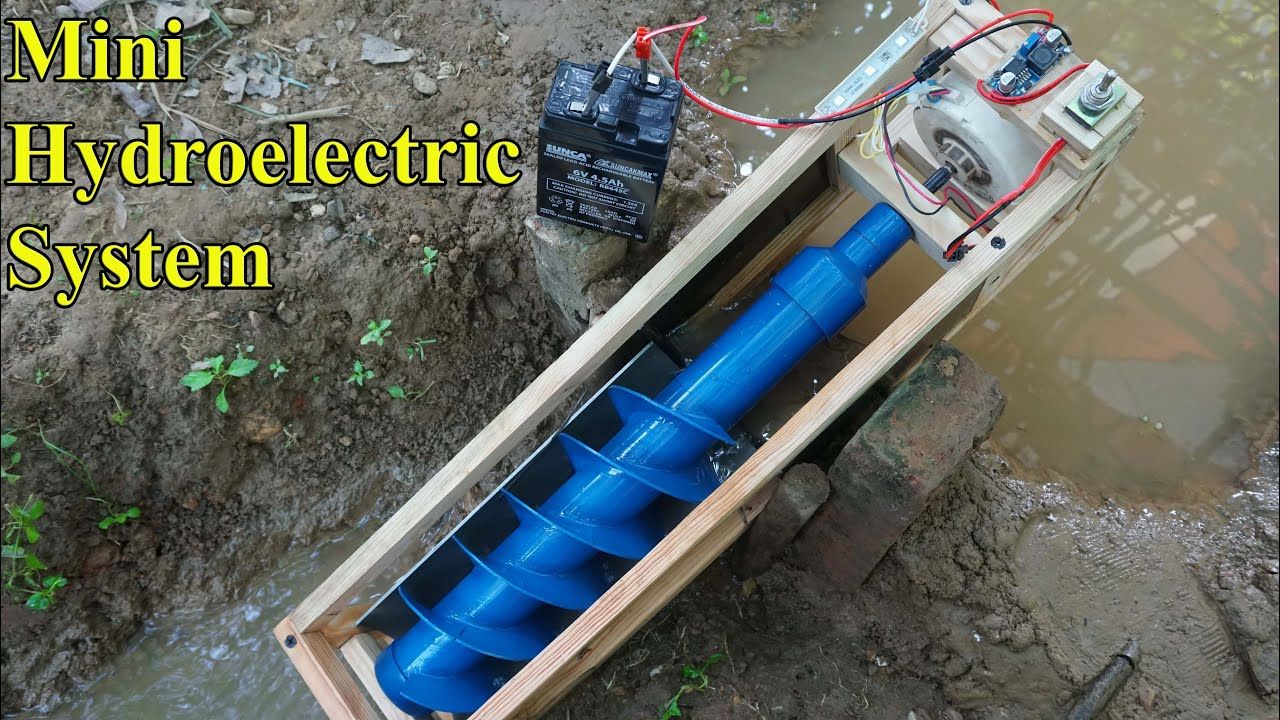Have you ever thought about how we can harness the power of water to generate electricity? Water is not only vital for our survival, but it's also an incredible source of energy. In this post, we’re going to explore how you can generate electricity from water through simple, practical methods. Whether it's through large hydroelectric power plants or small DIY projects, the potential of water as an energy source is astonishing. So, let’s dive in and discover the basics of water-based electricity generation!
Understanding the Science Behind Water Energy

Water energy, often referred to as hydraulic energy, is derived from the movement of water and can be converted into electricity through various methods. This conversion is based on a few fundamental scientific principles. Let’s break it down into digestible pieces:
1. The Energy of Motion
The primary science behind generating electricity from water is the concept of kinetic energy. When water flows, whether from a river, waterfall, or even through pipes, it possesses kinetic energy. This energy can be captured and converted into electrical energy using turbines. The basic idea is that as water moves, it turns a turbine; the movement of the turbine generates electricity through electromagnetic induction.
2. Hydroelectric Power Generation
Hydroelectric power plants are the most common large-scale examples of water energy generation. Here’s how they work:
- Water Reservoir: A large amount of water is stored in a dam or reservoir.
- Water Flow: When released, water flows from the reservoir through pipes, called penstocks.
- Turbine Activation: The force of the flowing water turns large turbines.
- Electricity Generation: The turbines are connected to generators that convert mechanical energy into electrical energy.
This process does not consume water; it simply converts the energy contained in flowing water into electricity, which is a significant feature of hydroelectric power—the potential for renewable energy.
3. Small-Scale Water Energy Projects
For individuals looking to generate electricity from water on a smaller scale, there are exciting DIY options. Here are a few methods you can try:
- Water Wheel Generator: Utilize a water wheel setup that captures the energy of flowing water in a stream. This simple design can generate sufficient power for small gadgets.
- Micro-Hydropower Systems: These systems use miniature turbines to convert flowing water's kinetic energy into electricity, ideal for rural homes or farms.
- Homemade Hydropower Units: Using readily available materials, you can create your own miniature hydroelectric generator to power lights or small appliances.
The beauty of generating electricity from water lies not only in its efficiency and sustainability but also in its accessibility—you can start small, even in your backyard. The future of energy is bright and clear with the potential of water power, waiting for you to dive in!
Also Read This: How Dailymotion Enhances Educational and Creative Video Experiences
3. Different Methods for Generating Electricity from Water

When it comes to generating electricity from water, there are several fascinating methods to choose from. Each method has its unique advantages and applications, so let’s explore some of the most popular options:
- Hydroelectric Power: This is the most common method of generating electricity from water. It harnesses the energy from flowing or falling water. Large dams are typically built on rivers, and as the water flows through turbines, it spins them to generate electricity. This method is incredibly efficient but requires significant infrastructure.
- Hydropower with Small-Scale Turbines: Not all hydroelectric power needs to come from massive dams. Smaller, mobile turbines can be installed in rivers and streams, making it possible for homes or small communities to harness energy without impacting large ecosystems.
- Wave Energy: The ocean's waves are a powerful energy source. Wave energy converters capture the movement of waves and convert this kinetic energy into electricity. Although still in development stages, this method offers great potential due to the vastness of oceanic energy.
- Tidal Energy: Tidal power uses the movement of tides to generate electricity. Tidal turbines, which function somewhat like underwater wind turbines, are placed in areas with strong tidal currents. While tidal energy projects may require significant investment, they provide an incredibly reliable source of power.
- Hydrogen Production through Electrolysis: This method uses electricity—often sourced from wind or solar—to split water molecules into hydrogen and oxygen. The hydrogen can then be stored and used as a fuel source for generating electricity in fuel cells.
- Direct Water Thermal Energy Conversion: Although more complex, some technologies exploit the thermal energy of water by capturing heat gradients, especially in oceans or industrial processes, to produce steam and drive turbines.
Each of these methods allows us to tap into the energy of water, and while some may require more resources or technology than others, they all contribute to renewable energy efforts. As advancements in technology continue, we can expect to see even more innovative ways to harness the power of water!
Also Read This: How Safe Is the Dailymotion Site
4. Tools and Materials Needed for the Tutorial

Now that we’ve got a good understanding of the different methods for generating electricity from water, it’s time to dive into the practical side. If you're planning to create your own small-scale water generator, here’s a list of tools and materials you’ll need:
| Tools | Materials |
|---|---|
| 1. Multimeter | 1. Small water turbine (can be purchased online) |
| 2. Screwdriver | 2. Generator (DC motor or small alternator) |
| 3. Pliers | 3. PVC piping (for water flow channel) |
| 4. Tools for cutting (like a saw or knife) | 4. Battery (for storing generated electricity) |
| 5. Wrench | 5. Electrical wires (for connections) |
| 6. Waterproof container or casing | 6. Waterproof adhesives or sealants to prevent leakage |
Optional materials include:
- Solar panel (to power the generator when water isn’t available)
- LED lights (to test generated electricity visually)
Once you have all your tools and materials ready, you’re on your way to creating your very own water-powered generator! Remember, safety first: always wear protective gear and ensure your work area is secure. Now let’s get ready to transform that water into electricity!
Also Read This: How to Create Handmade Paper Bags: Easy Dailymotion Videos
5. Step-by-Step Guide to Creating Your Own Water Power System

Creating your own water power system might sound like a daunting task, but with a little patience and careful planning, you can harness the power of water to generate electricity right at home! Here’s a simple step-by-step guide to get you started on your hydroelectric journey.
Step 1: Gather Your Materials
- Water turbine (you can purchase one or build your own)
- Generator (a small DC motor can work well)
- Piping or tubing to direct water flow
- Batteries or a charge controller
- Wire connectors and electrical tape
- Tools: screwdriver, drill, and wrench
Step 2: Choose Your Location
Find a suitable location with a constant flow of water. This could be a stream, river, or even runoff from a roof. Ensure the site has enough water to sustain the turbine’s operation. If you’re using a stream, consider checking local regulations about installing a turbine!
Step 3: Set Up the Water Turbine
Your water turbine should be placed in a position where it can harness the flowing water effectively. Make sure it’s secure and can withstand the current. If you’re building your own turbine, there are plenty of DIY guides available online that can help you with the construction.
Step 4: Connect the Generator
Once your turbine is in place, it’s time to connect it to your generator. The turbine will spin as water flows over it, and this motion will be transferred to the generator, converting kinetic energy into electrical energy. Use the wire connectors to join the components, ensuring all connections are tight for optimal performance.
Step 5: Hook Up the Battery Storage
Next, connect your generator to a battery or a charge controller. This setup will allow you to store the electricity generated for later use. A typical battery would be sufficient for small-scale projects. Don’t forget to label all connections and ensure everything is insulated from water!
Step 6: Test Your System
Once everything is installed, it’s time to test your hydroelectric system. Check voltage and current output to see if the generator is functioning correctly. If everything looks good, congratulations! You’ve just created your own water power system.
Hydroelectricity can be a great addition to your off-grid energy setup or a fun project to teach anyone about renewable energy!
Also Read This: How to Use Camtasia Studio 8 on Dailymotion: Video Editing Made Easy
6. Safety Precautions When Working with Water and Electricity
Working with water and electricity can be incredibly rewarding, but it’s also essential to prioritize safety. Here are some crucial precautions you should take to protect yourself and your home when setting up your water power system.
1. Use Waterproof Equipment
Ensure that all your electrical components, including wires and connectors, are waterproof. This will help prevent short circuits and electric shocks.
2. Avoid Working in Wet Conditions
Choose a dry day for your setup. If you must work in damp conditions, make sure to wear rubber-soled shoes and use insulated tools. Keep your workspace tidy and unobstructed to minimize the risk of slips and falls.
3. Keep Electricity Away from Water
Maintain a safe distance between electrical parts and water sources. Use proper conduits and housing to keep wires insulated and safe from moisture. If you’re running wires through wet areas, consider using conduit systems.
4. Install Ground Fault Circuit Interrupters (GFCI)
GFCI outlets are designed to trip and cut off electricity when they detect a ground fault. Installing these in areas where electricity and water might mix adds an extra layer of protection.
5. Follow Local Regulations
Check local laws regarding hydroelectric systems. Some areas may have restrictions or require permits for installation. Abiding by these laws ensures you’re working safely and legally!
6. Have an Emergency Plan
Always be prepared for accidents by having an emergency plan in place. Know how to cut off power quickly in case of an electrical issue, and keep a first-aid kit handy. It’s always better to be over-prepared than underprepared!
By following these safety precautions, you can enjoy the benefits of generating electricity from water while minimizing risks. Happy hydropower building!
Also Read This: How to Make Small Paper Flowers: Fun Craft Tutorial on Dailymotion
7. How to Optimize Your Water Electricity Generation
Optimizing your water electricity generation setup is crucial if you want to get the most out of your system. Whether you’re running a small micro-hydro generator at home or looking to maximize efficiency in a larger setup, a few key strategies can help you make the most of your resources. Here’s a straightforward guide to optimizing your water electricity generation:
- Choose the Right Site: The location of your generator matters immensely. Look for areas with a consistent flow of water. Riverbanks or streams that don’t fluctuate much in water level are ideal.
- Maximize Water Flow: Try to increase the flow rate across your turbine. A simple way to achieve this is by narrowing the channel or installing a weir, which helps to enhance water speed.
- Use the Correct Turbine: Select a turbine that fits your water source. For example, a Kaplan turbine is best for low head with high flow rates, while a Pelton wheel excels in high head with moderate flow rates.
- Regular Maintenance: Don’t overlook regular maintenance! Clean your turbine and check for wear and tear on all components. This will ensure that your system operates at peak performance year-round.
- Adjust for Seasonal Changes: Water flow can vary with seasons; during heavy rain, it can be high, while in dry seasons, it might drop significantly. Design your system to accommodate these changes. You could have water storage options to help during dry periods.
By implementing these optimization strategies, you can significantly enhance the efficiency and output of your water electricity generation system. Remember, small tweaks and adjustments can lead to substantial increases in your energy production!
Also Read This: Step-by-Step Guide to Pausing Videos on Dailymotion
8. Real-Life Applications and Benefits of Water Energy
Water energy isn't just an abstract concept; it has real-world applications that can dramatically impact our energy landscape. Let’s dive into some exciting ways water energy is utilized, as well as the benefits it brings to communities and the environment.
Real-Life Applications
- Hydropower Plants: The most common form of water energy is large-scale hydropower plants. These facilities harness the energy of flowing water to generate electricity for thousands of homes.
- Micro-Hydro Systems: For those living in remote areas, micro-hydro systems provide a sustainable source of electricity. These systems can power homes or small communities by converting the energy from local streams.
- Wave Energy Converters: Coastal regions are tapping into wave energy technologies that capture the surface motions of the ocean and convert them into electricity.
Benefits of Water Energy
- Renewable and Sustainable: Water energy is renewable. As long as the water cycle exists, we can harness it without depleting water resources.
- Low Operational Costs: Once set up, the cost to maintain water energy systems is relatively low, making it an economical option for electricity generation.
- Minimal Carbon Footprint: Unlike fossil fuels, generating electricity from water produces little to no carbon emissions, helping to combat climate change.
- Reliable Source of Energy: Water energy can provide a consistent and reliable power supply, especially in areas where the amperage can be regulated.
In conclusion, the real-life applications of water energy demonstrate its value as a sustainable energy source. With its numerous benefits, it’s clear that harnessing water for electricity generation is a step toward a cleaner and more sustainable future.
Conclusion and Further Resources for Water Energy Projects
In conclusion, generating electricity from water is not only feasible but also a sustainable and eco-friendly approach to energy production. By exploring various methods such as hydropower plants, micro-hydro systems, and even small-scale DIY projects, you can find a suitable option that meets your energy needs while contributing to environmental conservation.
Here are some further resources to enhance your knowledge and help you implement water energy projects:
- U.S. Department of Energy: Hydropower Basics
- Investopedia: Understanding Hydroelectric Energy
- World Bank: Hydropower and Sustainability
- Your Home: A Guide to Hydropower
Additionally, consider joining online communities and forums such as Reddit’s r/renewableenergy or the DIY Solar Forum to exchange ideas and gain insights from fellow enthusiasts.
The transition to renewable energy sources is crucial, and water energy projects can play a significant role in achieving sustainability goals. With the right resources and knowledge, you can contribute positively to the environment while enhancing your energy independence.
 admin
admin








